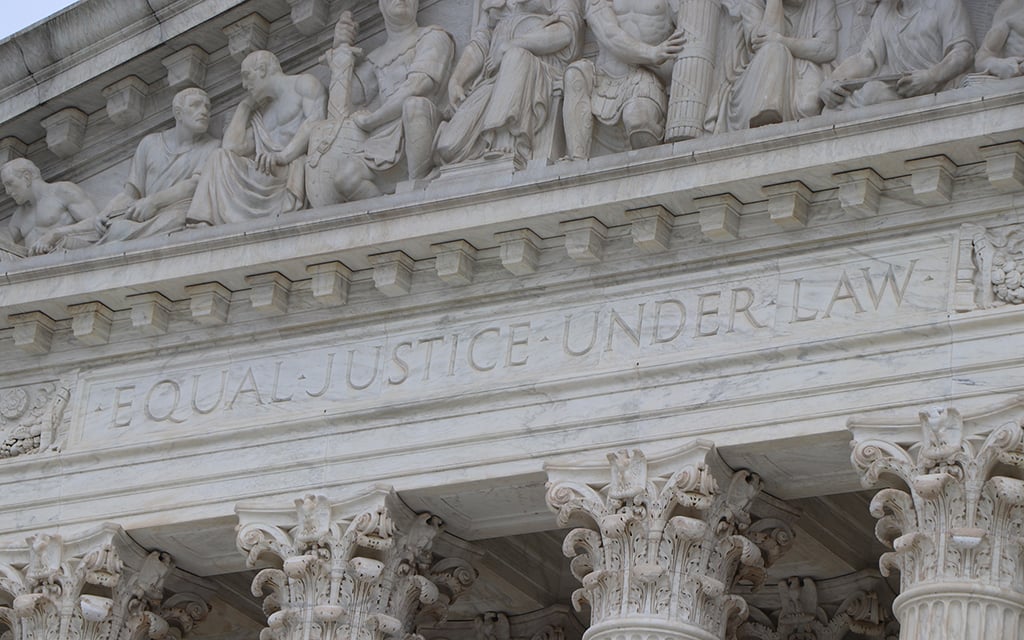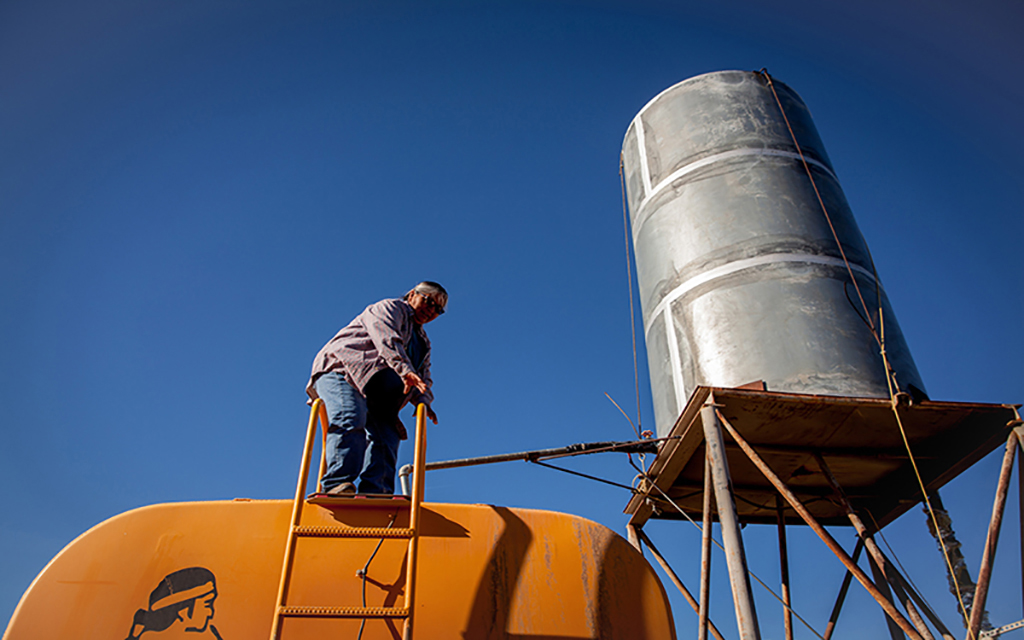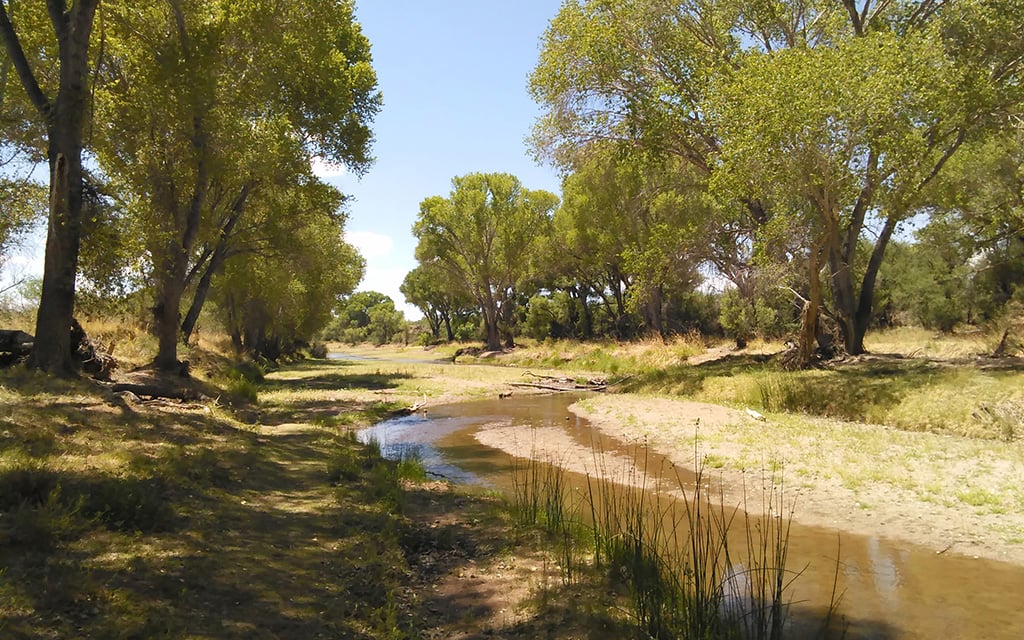
The San Pedro River in southeastern Arizona is the sort of seasonal waterway that could be affected by new Waters of the United States rules being developed by federal regulators after the Supreme Court sharply narrowed previous WOTUS regulations. (Photo courtesy Sandy Bahr/Sierra Club, Grand Canyon Chapter)
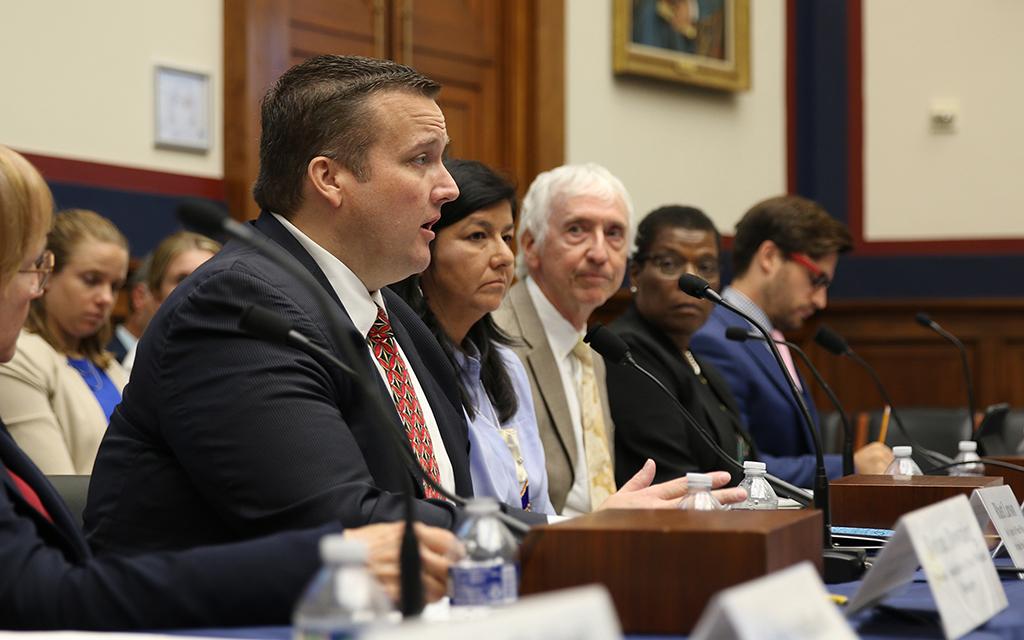
Rhett Larson, of the Kyl Center for Water Policy, at a House Democrats’ roundtable on pending changes to the Waters of the United States rule to comply with a Supreme Court ruling. He said officials need to be flexible as they adopt new rules. (Photo by Liam Coates/Cronkite News)
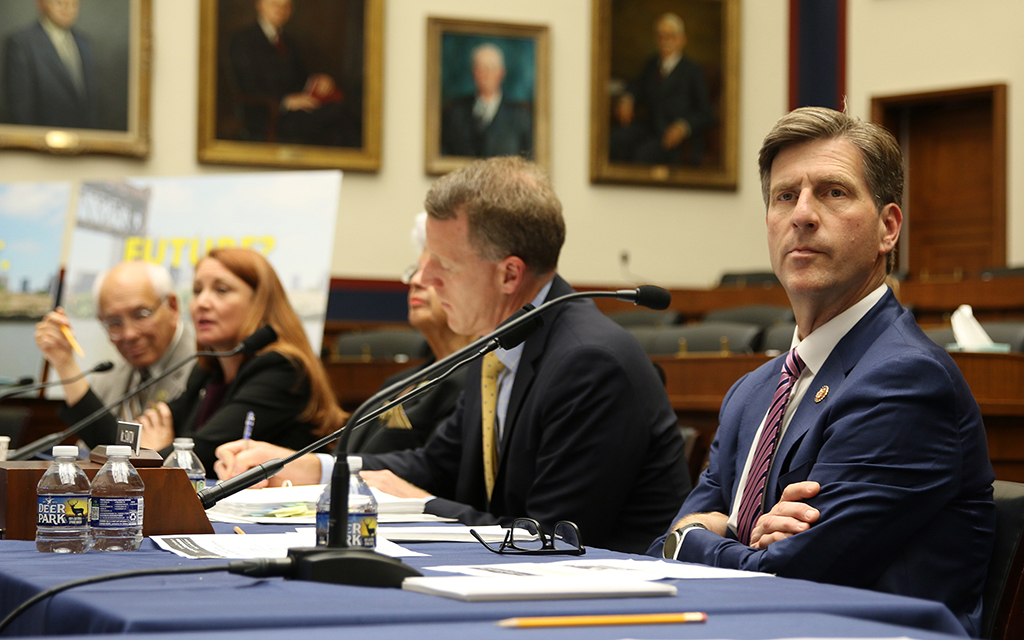
Rep, Greg Stanton, D-Phoenix, said that protection of ephemeral streams is “critically important” in a state like Arizona, as there’s “no place in America where water matters more.” He said the state’s economic development needs to be balanced against protecting water sources in any new rules. (Photo by Liam Coates/Cronkite News)
WASHINGTON – As regulators and advocates grapple with the fallout of a Supreme Court ruling that narrowed the Clean Water Act, water lawyer Rhett Larson offers a calming bit of advice: Be like Bruce Lee.
“I would encourage all of us to embrace the martial arts philosophy of Bruce Lee, who said: Be water,” Larson, a senior research fellow at the Kyl Center for Water Policy, said. “If we are to effectively manage water, we have to be more like water and be as adaptive as the resource we are seeking to protect.”
That is the challenge for state and federal regulators who are developing new regulations to comply with the Supreme Court’s ruling in Sackett v. EPA, which said the government can only regulate waters that have a direct connection to surface waters.
Critics said the court’s limits on the so-called Waters of the United States, or WOTUS, rule could have an outsized impact in a state like Arizona, where many of the waterways are ephemeral and intermittent.
“Over 95% of our streams are ephemeral, meaning they only flow in response to precipitation,” said Larson, highlighting the risk this presents if those waterways were to be backfilled to make way for development.
The Environmental Protection Agency said in an emailed statement that it is working with the Army Corps of Engineers to devise new WOTUS rules consistent with the Sackett ruling. That new rule is expected to be issued by Sept. 1.
In the meantime, the Arizona Department of Environmental Quality said that while Sackett was a “significant decision,” waters in Arizona are still protected by a raft of safeguards.
“The Clean Water Act represents only one tool in the toolbox to protect water resources in Arizona,” said an emailed statement from the department, which highlighted protections like the state’s Surface Water Protection Program and Aquifer Protection Program. It also pointed to Army Corps permit requirements that regulate construction activity around waterways.
State ranchers are proceeding cautiously as well, even as they welcome the Supreme Court’s ruling.
Jeff Eisenberg, policy director at the Arizona Cattle Growers Association, said ranchers are “happy to have the power of the federal government over land use checked,” but stressed that the ruling has not had a big impact on ranchers’ daily lives as yet.
“A lot of these ephemeral streams in Arizona, they don’t even connect to other bodies of water,” he said. “They emerge and sink back into the ground.”
Eisenberg said there are far more pressing problems for the federal government to focus on. He said there were “serious issues out there, and the government should go take those on” instead of trying to control ranchers, who already “exist at the outer margins of life as we know it.”
“When you look at all the big problems for pollution, this is like in the bottom 1/100th of 1% of those problems,” he said.
Larson said the impact on Arizona’s water quality from Sackett is likely to be limited thanks to stronger laws the state has than its neighbors, but he’s worried about the ruling’s potential to increase flood risk.
His comments came at a July roundtable organized by House Democrats titled “Murky Waters: Navigating a Post-Sackett World.”
While the Supreme Court’s ruling removed protection from many ephemeral and intermittent water sources, it did not specify which, or how many, were covered, sparking debate about its reach.
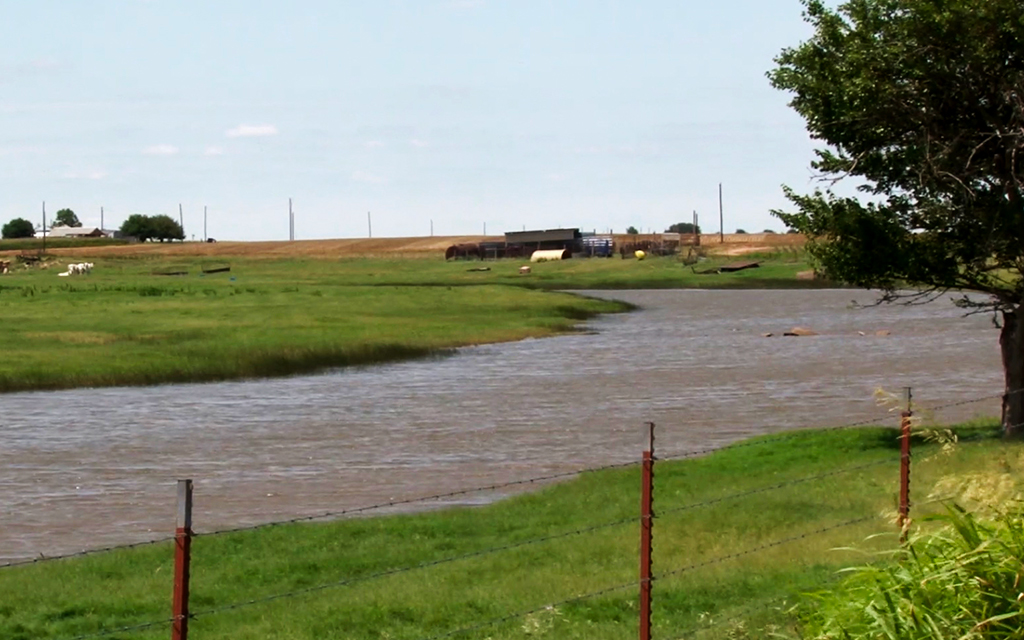
Standing water, such as that found in this Texas farm field, would no longer be subject to regulation by the Clean Water Act under the Supreme Court’s May 25 ruling in Sackett v. the Environmental Protection Agency. (Photo provided by Texas Farm Bureau)
Democrats at the meeting said the justices “wrote a decision that defies the basic logic of hydrology.”
“Anybody who’s ever worked on water issues understands that our hydrological systems are inextricably linked,” said Rep. Melanie Stansbury, D-N.M. She said in arid states, protecting wetlands is an integral part of protecting surface waters.
In his opinion for the court, Justice Samuel Alito justified the change by saying the current WOTUS rules “criminalize mundane activities like moving dirt,” putting a “staggering array of landowners at risk of criminal prosecution or onerous civil penalties.” The ruling brings clarity to the definition of WOTUS, he said.
But Stansbury accused the justices of making the situation “muddier,” rather than clarifying things.
Larson fears that Sackett will allow for backfilling of areas, previously protected by WOTUS, that could worsen drainage and lead to more and bigger floods.
He said the court does not seem to grasp the difference between a river in Arizona and one on the East Coast, noting that only one of the nine justices come from west of the Mississippi River.
“One of my biggest annoyances with the Sackett opinion is that there’s a part where Justice Alito says, well, in common parlance, we all know what a river is. Well, Arizonans, when we say river, we mean a very different thing than people in Washington, D.C.,” he said.
“People in Arizona, when you say, ‘Name me a river,’ will name rivers like the Gila, the Salt, the Santa Cruz, the San Pedro, many of which have ephemeral beds. I drive every day over the Gila River and the Salt River, and there’s almost never water in there, but I still call it a river.”
Larson said another aspect unique to Arizona is the state’s dependence on the Colorado River, “which means how other states, particularly states adjacent to us or upstream of us, treat water matters a lot to us because we absorb a lot of the problems as the downstream neighbor.”
Rep. Greg Stanton, D-Phoenix, joined Larson in his concern about the increased risk of flooding as a result of the ruling, saying there was “no place in America where water matters more than in Arizona.”
Speaking after the hearing, Stanton said that ephemeral streams were “critically important” for distributing monsoon season rains and so were responsible for protecting people and property from flooding.
He said that as Arizona grows, economic and development interests need to be balanced with the need to protect water sources, and that “right now, I think the Sackett decision went so far to one side that we’ve upset that important balance.”
With new regulations expected by Sept. 1, Larson and others are hoping for a more flexible definition that they say reflects the reality of water policy.
“It is the nature of the law to draw lines and it is the nature of water to defy lines,” Larson said. “But, water doesn’t care about those lines. It will absorb into, flow under, fly over and erode away any line you attempt to draw around it.”
And he pointed once again to the martial arts legend for guidance.
“Bruce Lee says, you put water into a bottle, it becomes the bottle. You put it into a cup. It becomes the cup. We need a Clean Water Act that works that way,” he said.

